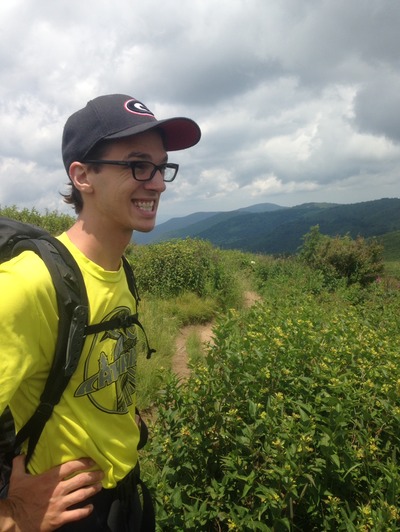Growing up in Georgia, I was surrounded by several regions were water was visibility altering the environment: from migrating barrier islands along the coast to eroding farmland in the Piedmont. In regions were water is so prevalent at the surface, it is easy to over look the complexity of hydrologic processes beneath your feet. In contrast, the seasonally dry environment of the Southern Sierras, where I am currently working, emphasizes the importance of flow and subsurface water storage to surface ecosystems. Techniques such as drilling can be implemented to quantify water stored beneath the surface, but one can argue geophysics provides less invasive methods for achieving similar goals.
As a B.S. student at the University of Georgia, I first explored geophysics as a tool to help constrain geologic models. I had the opportunity to work with the NSF funded project, Southeastern Suture of the Appalachian Margin Experiment (SESAME), installing seismic stations and processing data through receiver function analysis. During an independent study with Dr. Rob Hawman, I used distant earthquakes recorded with the PASSCAL broadband seismic array to extrapolate deep structure (30km depth) beneath the Carolina terrane. The SESAME array has provided data to several researchers exploring Appalachian structure and tectonic history. I have continued using passive seismology as a graduate student at the University of Wyoming (UW) to explore more detailed structure at the near surface (upper 30m) in the Southern Sierra Crtical Zone Observatory (SSCZO).
I was drawn to the UW, where the Wyoming Center for Environmental Hydrology and Geophysics (WyCEHG) and Steve Holbrook were the first to deploy geophysics across the CZO network. Collaborating with WyCEHG, Ken Dueker, and Cliff Riebe, I am optimizing a passive seismic method that uses Rayleigh waves to invert for 3D shear- wave velocity structure in the subsurface critical zone, which along with existing geophysical data can constrain saprolite extent in the SSCZO. As conditions in California worsen with the drought, understading water pathways and subsurface storage in saprolite will be essential for California to continue to thrive as an agriculturally rich state.
